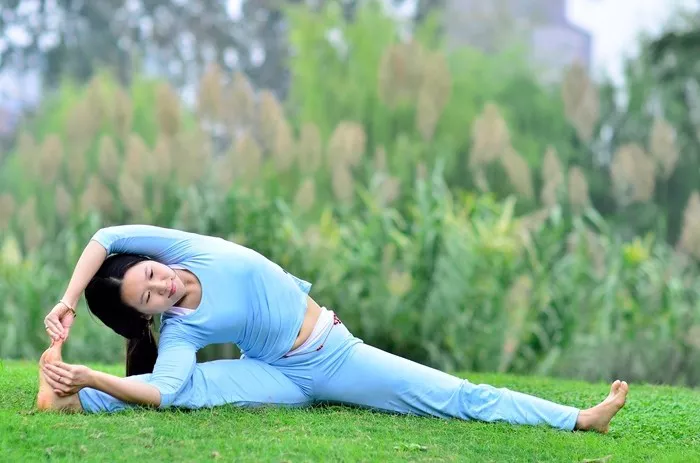In the quest for inner peace and self-realization, humanity has traversed various spiritual paths, each offering unique insights and practices. Sahaja Yoga stands out as a profound and holistic approach to self-discovery and spiritual awakening. Rooted in ancient wisdom yet accessible to modern seekers, Sahaja Yoga offers a transformative journey towards harmony and enlightenment. Let us embark on an exploration of what Sahaja Yoga entails, its principles, practices, and the profound impact it has on individuals and society.
Origins and Philosophy
Sahaja Yoga, meaning “spontaneous union” in Sanskrit, was founded by Shri Mataji Nirmala Devi in 1970. Shri Mataji, a spiritual luminary and humanitarian, envisioned Sahaja Yoga as a simple and natural method for individuals to achieve self-realization. At its core, Sahaja Yoga is based on the belief that every human being is born with an innate potential for spiritual enlightenment, and that this state of self-realization can be effortlessly attained through a process called Kundalini awakening.
Central to Sahaja Yoga’s philosophy is the concept of the Kundalini, often depicted as a dormant spiritual energy located at the base of the spine. Through the practice of Sahaja Yoga, this latent energy is awakened and ascends through the subtle energy centers, known as chakras, leading to a state of heightened awareness and self-realization. Sahaja Yoga emphasizes the innate connection between individual consciousness and the universal divine consciousness, positing that true fulfillment and joy arise from aligning with this higher reality.
Principles and Practices
The practice of Sahaja Yoga encompasses various techniques aimed at nurturing self-awareness, inner balance, and spiritual growth. Central to these practices is the meditation technique of “thoughtless awareness,” wherein practitioners effortlessly enter a state of thoughtless, yet alert, consciousness. This state allows individuals to experience the present moment fully, free from the burden of thoughts and distractions.
In addition to meditation, Sahaja Yoga incorporates simple physical exercises, known as “clearing techniques,” to purify the subtle energy channels and facilitate the smooth flow of Kundalini energy. These techniques, which include simple hand movements and affirmations, help practitioners release emotional and mental blockages, leading to a greater sense of inner harmony and well-being.
Another key aspect of Sahaja Yoga is the importance placed on collective spiritual practices. Regular gatherings, known as “Sahaja Yoga meetings,” provide an opportunity for practitioners to come together, meditate collectively, and share their experiences on the spiritual journey. Through collective meditation, participants not only amplify the benefits of their individual practice but also contribute to the creation of a supportive and nurturing spiritual community.
Benefits and Impact
The practice of Sahaja Yoga offers a myriad of benefits that extend beyond the realm of personal well-being. Research studies have shown that regular meditation and Kundalini awakening through Sahaja Yoga can lead to reduced stress, improved emotional regulation, and enhanced overall health and vitality. Moreover, Sahaja Yoga practitioners often report experiencing a profound sense of inner peace, joy, and interconnectedness with all living beings.
Beyond individual transformation, Sahaja Yoga has a ripple effect on society as a whole. The cultivation of inner peace and harmony within individuals radiates outward, fostering greater compassion, understanding, and unity in communities. Sahaja Yoga’s emphasis on collective consciousness and universal brotherhood serves as a catalyst for positive social change, promoting harmony and cooperation across diverse cultures and traditions.
Challenges and Misconceptions
While Sahaja Yoga offers a powerful path to self-realization, it is not without its challenges and misconceptions. One common misconception is that Sahaja Yoga is merely a relaxation or stress-relief technique. While relaxation and stress reduction are indeed byproducts of the practice, the ultimate goal of Sahaja Yoga is spiritual awakening and self-realization.
Another challenge is the misinterpretation of Kundalini awakening as a mystical or esoteric experience. In reality, Kundalini awakening in Sahaja Yoga is a natural and spontaneous process that occurs gradually as practitioners deepen their meditation practice and purify their subtle energy system. It is a gentle and nurturing journey guided by the innate intelligence of the body and the divine grace of the Guru.
Conclusion
In conclusion, Sahaja Yoga stands as a beacon of hope and wisdom in an increasingly turbulent world. By offering a simple yet profound path to self-realization, Sahaja Yoga empowers individuals to unlock their inner potential and experience the boundless joy of the true self. Through its principles of collective consciousness and universal brotherhood, Sahaja Yoga has the power to transcend barriers of culture, religion, and ideology, uniting humanity in a shared journey towards peace, harmony, and enlightenment. As we continue to navigate the complexities of modern life, may Sahaja Yoga serve as a guiding light, illuminating the path to inner peace and spiritual fulfillment for all.



















